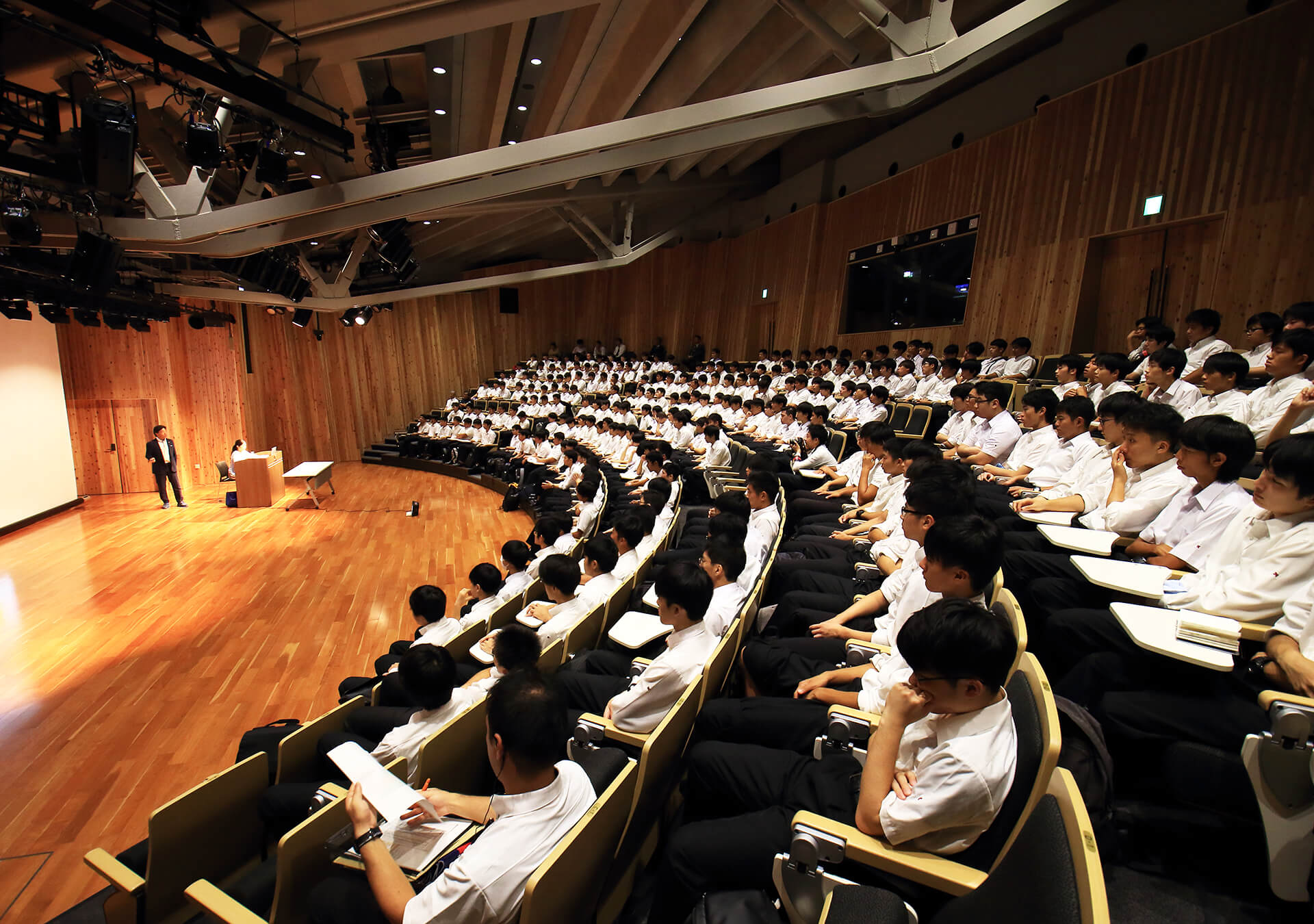Greeting:Keio Senior High School

The Mission Statement of Keio (University)

Keio University is not merely a place for academic pursuit. Its mission is to be constant source of honourable character and a paragon of intellect and morals for the entire nation and for each member to apply this spirit to elucidate the essence of family, society, and nation. They will not only articulate this essence in words, but also demonstrate it in their actions, and by so doing make Keio a leader of society.
-Yukichi Fukuzawa

Introduction to Keio
Keio University traces its beginnings to the original Keio Gijuku, an institution of Western learning unlike any other in Japan in its time. Founder Yukichi Fukuzawa (1835-1901) was a man of uncommon courage, vision, and wisdom who defied the established powers of the time and pursued knowledge above all else, endeavoring to understand the society and morals of 19th century civilization in Europe and North America. His beliefs were very progressive in a Japan that was just beginning to awake from centuries of isolation. His convictions and deeds made an indelible mark on the country that would, barely more than a century later, become the second-largest economic power in the free world.
Since its founding in 1858, the history of Keio University parallels the history of Japan's modern era. The vision and clarity of founder Yukichi Fukuzawa's original teachings have held up well for nearly a century and a half of serious academic inquiry in the service of Japan's development and modernization. Fukuzawa believed that Japan's only choice for catching up with Western technology and social organization was to "always strive for progress and enlightenment, and provide the academic and moral education needed to create a generation of wise and capable leaders." To this end, Keio University has continued to provide intellectual leadership that addresses the issues facing Japanese society in its quest for development, transformation, and modernization. As we face the challenges of the post-industrial era of the 21st century, Keio continues to uphold the pioneer spirit of its founder in his pursuit of peace, prosperity, and progress.
[ https://www.keio.ac.jp/en/about/history/ ]
Affiliated Schools
Keio University has a long tradition of comprehensive primary and secondary education. Students are encouraged to take initiative in all aspects of school life and are offered a multitude of opportunities to discover and realize their individual potential. While all of Keio's affiliated schools share the same overall educational philosophy, each possesses a unique personality and its own set of policies, which set the course for fostering both diversity and competence among the students.
[ https://www.keio.ac.jp/en/academics/affiliated-schools/ ]

Keio Senior High School
Keio's high school division was founded in 1948 as High School I and High School II. Later merged into a single school, Keio Senior High School's current enrollment is of some 2,200 male students, making it the largest affiliate in the Keio system. The school prides itself on academic excellence as well as a wide range of student interests.
[ https://www.keio.ac.jp/en/academics/affiliated-schools/ ]
Curriculum
 Compulsory Subjects
Compulsory Subjects
In the 1st and 2nd year, the students will only take compulsory subjects. Continuing into their 3rd and final year, they will keep on with their studies centered on these subjects to gather a wide range of knowledge on liberal arts.
Through the three years, the students will take 4 science and 3 social studies courses. When entering their second year, each student will select an additional foreign language to blossom a wider point of view and way of thinking. They will prosper the core of "chitoku(knowledge and virtue)" and to become "zenshakainosendosha(the leader of society)". We provide balanced and comprehensive learning courses to make this possible.
Elective Subjects & Sotsugyoukenkyu(Graduating Project)
In the final grade, the school offers elective subjects to fit the future course of each student and his academic interest. The students will select these subjects based on the compulsory subjects they took in the 1st and 2nd year, also preparing the students into their college studies and future careers.
Also in the final grade, each student will pick a topic on a variety of courses offered by the departments. Through the process of preparing for their "sotsugouykenkyu(Graduating Project)", each student will process a further understanding on a topic of interest while training their ability of problem-solving and thinking and expressing their ideas academically.

| 1st Grade | 2nd Grade | 3rd Grade | |||
|---|---|---|---|---|---|
| Subject | Credits | Subject | Credits | Subject | Credits |
| Contemporary Japanese Language | 2 | Advanced Classics | 4 | Japanese Language(Logic) | 4 |
| Language Culture | 2 | Modern and Contemporary History | 3 | Mathematics B | 2 |
| Geography | 3 | Mathematics II | 4 | Basic Earth Science | 2 |
| Public | 3 | Basic Physics | 3 | Physical Education | 2 |
| Mathematics I | 3 | Basic Chemistry | 3 | English Communication III | 4 |
| Mathematics A | 2 | Physical Education | 3 | Electives A | 8~12 or 4~6 |
| Basic Biology | 3 | art | 2 | Electives B | 2 or 8 |
| Physical Education | 2 | English Communication II | 4 | Thesis | 2 |
| Health Science | 2 | 2nd Foreign Language | 2 | Program for Future Development | 1 |
| Art | 2 | Basic Home Economics | 2 | Home Room | 1 |
| English Communication I | 4 | Home Room | 1 | ||
| Information Study I | 2 | ||||
| Home Room | 1 | ||||
| Total | 31 | Total | 31 | Total | 32 |








